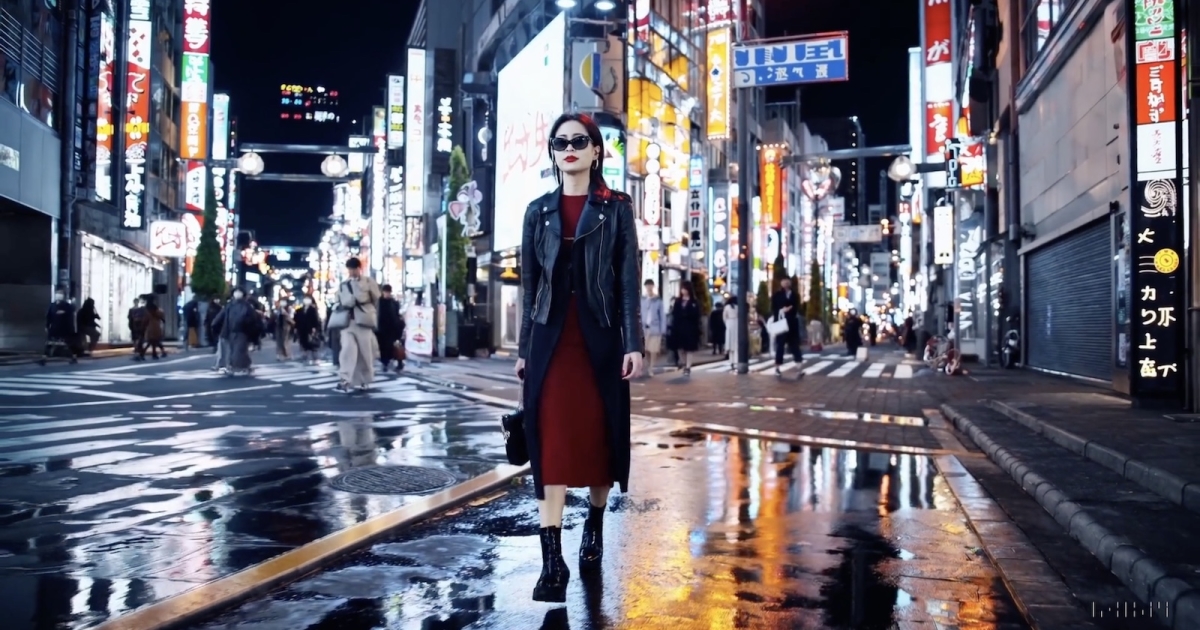Introducing Sora: OpenAI's Text-to-Video Model
Core Concepts
OpenAI introduces Sora, a text-to-video model, to enhance AI's understanding of the physical world through motion simulation.
Abstract
OpenAI has unveiled Sora, a new text-to-video model named after the Japanese word for "sky." This innovative model, powered by a transformer architecture like GPT models, can create high-quality videos up to a minute long based on user input. Notably, Sora can animate still images accurately, bringing them to life with intricate details and fidelity.
Check Out Sora, OpenAI's New Model That Can Generate Videos From Text
Stats
Sora can generate videos lasting up to a minute.
The model maintains high visual quality and fidelity to user prompts.
It can animate still images accurately and capture even the smallest details.
Quotes
Key Insights Distilled From
by at 80.lv 02-16-2024
https://80.lv/articles/check-out-sora-openai-s-new-model-that-can-generate-videos-from-text/
Deeper Inquiries
How will Sora impact the future of video content creation?
Sora, OpenAI's new text-to-video model, is poised to revolutionize the landscape of video content creation. By being able to generate high-quality videos from text prompts and still images, Sora opens up a realm of possibilities for creators and businesses alike. One significant impact is the democratization of video production – with Sora's capabilities, individuals without extensive technical skills or resources can now create engaging videos efficiently. This could lead to a surge in user-generated content across platforms.
Moreover, Sora's ability to accurately animate still images means that concepts that were previously challenging or time-consuming to visualize can now be brought to life effortlessly. This could streamline the pre-production process for filmmakers and animators, allowing them to focus more on creative aspects rather than technical execution.
In terms of marketing and advertising, Sora could enable brands to quickly produce personalized video content tailored to individual customers or target audiences. This level of customization has the potential to enhance engagement and drive conversions significantly.
Overall, Sora's impact on video content creation is likely to be transformative by making it more accessible, efficient, and versatile than ever before.
What are potential ethical implications of using AI models like Sora for generating videos?
While AI models like Sora offer exciting possibilities for video creation, they also raise important ethical considerations that need careful attention. One key concern is the potential misuse of generated content for misinformation or propaganda purposes. With tools like Sora capable of creating realistic-looking videos from text inputs, there is a risk that malicious actors could use this technology to spread false information at scale.
Another ethical issue revolves around consent and privacy. If personal data or likeness is used in videos created by AI models without explicit permission from individuals involved, it raises questions about consent rights and data protection laws.
Furthermore, there are concerns about job displacement within industries reliant on traditional methods of video production. As AI models become more sophisticated in generating visual content autonomously, there may be implications for professionals working in roles such as animation or editing.
Addressing these ethical implications requires robust guidelines around responsible use of AI-generated media along with transparency measures regarding how such content was produced.
How might advancements in text-to-video models like Sora influence storytelling in various industries?
Advancements in text-to-video models like Sora have the potential to reshape storytelling across diverse industries ranging from entertainment and education to marketing and journalism. In entertainment sectors such as film and television production, these models can streamline pre-visualization processes by quickly translating script ideas into visual representations through generated videos based on textual descriptions.
In education settings, text-to-video models can enhance learning experiences by creating interactive visual aids that cater specifically to different learning styles. Complex concepts can be simplified through animated visuals generated by AI tools like Sora which may improve comprehension among students.
For marketers and advertisers looking to engage consumers effectively amidst digital clutter,text-to-video technologies offer opportunities for dynamic storytelling through personalized multimedia campaigns driven by user input texts.This levelof interactivitycan deepen audience engagementand foster brand loyaltythrough immersive narratives delivered via visually compellingcontentgeneratedbyAImodelslikeSorain real-time
Overall,text-to-videomodelslikeSorahavegreatpotentialtoenhancestorytellingacrossvariousindustriesbyprovidingnewavenuesforcreativityandengagementwhilealsopresentingchallengesinmaintainingauthenticityandethicallyresponsibleusecases
0
